System Buyers' Guide: PCs for Under $1000
by Sean Hollister on February 12, 2010 2:00 AM EST- Posted in
- Guides
AMD Entry-Level PC
Even as Intel produces the fastest desktop processors in the world, it is competitor AMD that has become synonymous with value. Under the $125 price point that Intel has set with the Core i3-530, AMD reigns supreme in both performance and raw core count for every dollar spent. Because of that, for the first time in an AnandTech Buyer's Guide, you'll find us recommending a triple-core processor for an entry-level machine.
| AMD Entry-Level System | ||
| Hardware | Component | Price |
| Processor | AMD Athlon II X3 435 Rana (Tri-core 2.9GHz, 45nm, 3x512KB L2 Cache, Socket AM3) |
$75 |
| Cooling | CPU Retail HSF | $0 |
| Video | Onboard | $0 |
| Motherboard | ASRock M3A785GMH/128M AM3 Micro ATX | $77 |
| Memory | G.Skill Ripjaws 4GB DDR3-1600 F3-12800CL9D-4GBRL | $105 |
| Hard Drive | WD Caviar Blue 500GB WD5000AAKS | $54 |
| Optical Drive | Sony Optiarc Model AD-7240S-OB 24X DVDRW SATA | $28 |
| Audio | Onboard | $0 |
| Case | Cooler Master Centurion 5 CAC-T05-UW Mid Tower ATX | $55 |
| Power Supply | OCZ ModXStream Pro 500W ATX12V SLI Certified, CrossFire Ready, 80 PLUS Certified Modular Active PFC (before $25 Rebate) | $65 |
| Base System Total | $459 | |
| Display | ASUS VW193TR Black 19" 5ms Widescreen LCD (1440 x 900) | $120 |
| Speakers | Built-in Monitor | $0 |
| Input | Microsoft B2L-00045 Comfort Curve Black USB Keyboard and Optical USB Mouse - OEM | $22 |
| Operating System | Microsoft Windows 7 Home Premium OEM 1-Pack (for System Builders) | $105 |
| Complete System Total | $706 | |
| Plus Estimated Shipping (within Continental U.S.) | $717 | |
| Rebates | -$25 | |
| Bottom Line (less tax, if applicable) | $692 | |
And what a processor it is: the 2.9GHz Athlon II X3 435 Rana. Here's the 435 Rana slaughtering last year's value CPU choice, the Athlon X2 7750 BE:
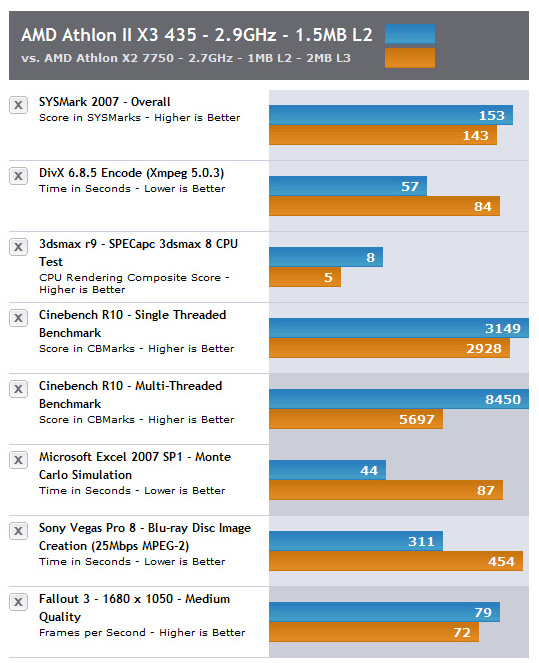
And here's the 435 Rana coming out ahead in every single benchmark against our choice for the Intel entry-level PC, the Pentium Dual-Core E5300:
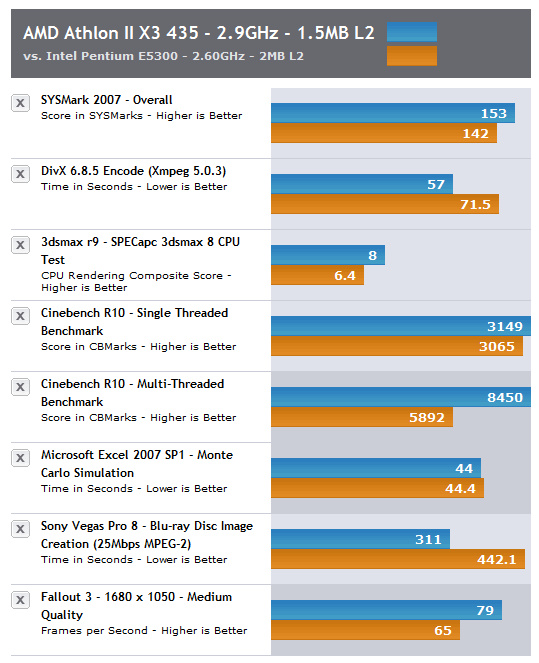
Positioned precisely at the sweet spot in AMD's lineup between the dual-core Athlon II X2s and the quad-core Athlon II X4s, the $75 Athlon II X3 435 Rana has the core count and clock speed to be the best of both worlds. It performs so admirably in both single and multi-threaded applications, in fact, as to give even low-end Phenom II CPUs a run for their money in certain benchmarks. Factor in low enough heat and power consumption that many report overclocking to 3.6GHz on air, and you have a practically perfect processor for budget enthusiasts.
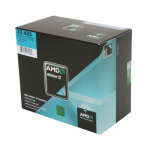 |
And because the 435 Rana is based on the Phenom II die, we just had to pair it with an ACC-capable motherboard. In case you're not familiar, AMD's tri-core chips actually aren't; they're quad-core CPUs binned as having a manufacturing defect in one core with that core consequently disabled. But if demand for a tri-core chip is high enough that AMD finds themselves having to disable perfectly good quad-core chips to sell them as tri-core instead… you just might be able to unlock that fourth core, and ACC (Advanced Clock Calibration) is your golden ticket.
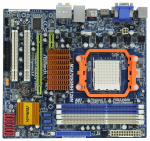 |
But ACC is hardly the best reason to buy the ASRock M3A785GMH/128M motherboard. The reason to buy the M3A785GMH is because for the bargain price of $77, it's one of the most full-featured Micro ATX motherboards we've seen for AMD chips. Based on the AMD 785G / SB710 chipset we favorably reviewed in August, the M3A785GMH is its most powerful interpretation—the one that comes with 128MB sideport of DDR3-1333 for enhanced video performance on its Radeon HD 4200 IGP and supports up to 16GB of DDR3-1600 system memory in four dual-channel banks. The SB710 Southbridge provides five SATA 3Gb/s ports supporting RAID 0, 1 and 10, while Realtek pulls double-duty providing 7.1-channel HD audio with their ALC888 chip and Gigabit Ethernet with their 8111DL NIC. VGA, DVI and HDMI video-out accompany an eSATA, combo PS/2, optical S/PDIF-out and four USB 2.0 ports on the rear panel, with headers for an additional six USB ports on the motherboard itself. Last but not least, a single PCIe x16, a PCIe x1 and two PCI slots appear in an excellent layout with three fan headers, an IDE slot and even a legacy floppy connector at the very bottom. If you don't feel you need the extra speed and future-proofing that comes with DDR3, you can easily shave off $12 by going with the practically identical $65 ASRock A785GMH/128M instead, which trades the Realtek ALC888 for VIA VT1708S 7.1-channel audio and an extra SATA 3GB/s port.
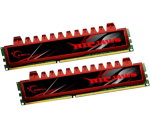 |
With both DDR2 and DDR3 memory prices the highest we've seen in recent memory, picking a set of fast, reliable yet inexpensive modules can be an exercise in futility. Be sure to shop around, because in all likelihood, there will be better and vastly different deals by the time you read this guide. But as of today, we believe the $105 G.Skill Ripjaws 4GB DDR3-1600 CAS 9 kit offers the best value for your money. It's true that regardless of brand and binning, the quality of memory modules varies widely, but G.Skill modules have an excellent reputation as of late, and these particular modules are designed to both run at low voltage (1.5v) and are reportedly excellent overclockers. As mentioned above, if you choose to go the DDR2 route you'll lose some overhead and future-proofing potential, but at a substantial savings of up to $30 if you choose low-cost DDR2 modules like the G.Skill DDR2-800 CAS5.
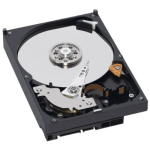 |
While the quality and reliability of magnetic hard drives increases year after year, we've found that actual hard drive capacity and performance is something of a commodity these days. Regardless of the manufacturer you pick today, an entry-level 500GB hard drive will cost you around $55 and offer the same performance as any of its brethren. The only exception to the rule is the WD Caviar Green, which tends to run slightly slower but quieter than its counterparts. Our current pick is the WD Caviar Blue, simply because of its widespread availability and Western Digital's stellar reputation.
Our choice for an optical drive remains the tried-and-true Sony Optiarc AD-7240S-0B, a SATA-connected 24X DVDRW with faster burning speeds and greater reliability than anything else in its price range. Though the price of Blu-ray readers has fallen considerably—the Lite-ON iHOS104-06 in particular retailing for only $60—Blu-ray is still a luxury for most budget boxes, its discussion better saved for our upgrade section on page 6.
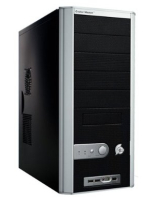 |
If we had to pick a single reason why low-end PCs get a bad rap, it would probably be the prevalence of cheap cases and even cheaper bundled power supplies. To combat these weaknesses, we chose the time-honored favorite Cooler Master Centurion 5 to house these budget PCs, and the OCZ ModXStream 500W PSU to power them. At $55, the Centurion 5 is a solid, stylish aluminum mid-tower with clean lines, few sharp edges, a pair of quality fans, a CPU air duct and a nearly tool-less design that makes installing drives and expansion cards quite easy. Meanwhile, the ModXStream 500W is a bona fide bargain at $40 after rebate, offering efficiency through both reduced power consumption (as certified by the 80 Plus efficiency rating) and a modular design that allows for reduced cabling and, by extension, greater airflow.
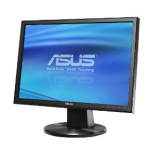 |
Though ASUS is known primarily as a manufacturer of motherboards, in recent years they've expanded their efforts greatly to include netbooks, sound cards and even low-cost monitors, each of which miraculously maintain the company's reputation for quality. We therefore have no reservations in recommending the $120 ASUS VW193TR, a 19" monitor with 1440x900 native resolution, DVI and VGA connectivity and a 5ms response time, all of which are more than acceptable for an entry-level screen at this price point. If you require a large desktop for productivity or intend to be viewing large amounts of HD multimedia content, however, you'll find bigger and better monitors in our upgrade section on page 6.










86 Comments
View All Comments
Ananke - Friday, February 12, 2010 - link
It is not cheap, since you have to pay at least $100 for the operational system, if you go Windows.However, OEM computers are designed to NOT be able to upgrade. The simplest example is trying to put powerful video a year later - the PSU will not be sufficient. Then, you will need to replace the PSU, but the case is proprietary and you will need new case too. If you pay attention to how many open slots for HDDs you have in Dell/HP, you will also realize serious restriction there. not to mention that Dell's internal design consists of strange and large plastic hoods for the fans, which are often obstructing new video cards. Also, you may just realize that the memory banks are only two on most OEMs, and hence you are going to double expenses if larger memory is needed.
My suggestion: first buy nice and spacious case with 90 degree HDD cage and at least four HDD slots! Example - Cooler Master Elite 310 for $49 (cheap, but the cages are 90 degree on this one).Then get really good PSU - Corsair, PCP&P, Seasonic 750W and above - you need it for all the available connectors and capacity for indefinite future expansion. Then decide on the platform. I had Intel, just recently switched to AMD and I am very happy actually with what I got for the twice less money - Fry's deal on Athlon II X4 630 with free Asus 785G micro-ATX, total $130. Yesterday I replayed Crysis warhead, it runs smooth on Enthusiast 1920*1200, with Radeon 5850.
Buy 2*2 GB DDR3 - there are modules on sale. I prefer Kingston Hyper X for stability. The idea is you want to start with at least two banks by 2GB so you have enough and still room for further expansion. The mobo should have 4 memory banks, not only two.
I got micro ATX, next upgrade I can use the micro ATX for a home server box or HTPC. If you get full ATX now, you cannot use it for HTPC small factor later, because it's big. Of course, if building ultimate machine, the choice of components is different. mine is best bang for the buck for gaming and video editing. Spec:
Asus A785M microATX, Athlon II X4 630, 8GB Kingston Hyper 1600 DDR3, 4*1TB Seagate Barracuda 7200.12 /not the 11th series- it's junk/, XFX Radeon 5850 regular, PCP&P 750W, Windows 7 64-bit Pro This comp gets 7.7 Win performance index. All components have frequent sale. Cut the memory to 4 GB, use HDD by your taste, use cheaper video and voila - you have power under $500. Intel configuration would cost me more. Instead I opt for the Radeon 5850. I transcode with Cyberlink Esspresso 5.5 or Avivo because are GPU accelerated. The last time it transcoded 4.31GB x.264 to PSP for 17 minutes :):). The Radeons are crazy stuff and under load temp is 42 Celsius. My previous G285 was going 81 Celsius under load and the entire motherboard was getting cooked.
brybir - Friday, February 12, 2010 - link
I agree about comparing to pre-built. The best bang for the buck in lower end builds is probably not building yourself anymore.For example, Gateway has a new Gateway DX4831-05 Desktop with:
i5-650 @3.2GHz,
8GB DDR3,
1TB HDD,
DVDRW,
HDMI,
eSATA,
FireWire,
Windows 7 Home Premium 64-bit
G310 graphics card
and this all comes in at $799 shipped free and no tax to most states. If you can find one refurbed you can cut another $100 off of that.
So the prebuilt machine comes in at $150 less but is arguably a better machine with a better processor, more ram, bigger hard drive, and a warranty with room to upgrade to a better video card. Even if you tack on $100 for a better vid card, you still save $50 and get much better system specs overall.
I know its not fun to just buy a PC anymore, but if you are not building a overclock hobby machine, it really pays to look around Dell, Gateway, HP etc for prices! (And hell, even gateway sells a $1299 i860 machine with a 5850, so even at the upper end, their are still good deals to be had)
mckirkus - Friday, February 12, 2010 - link
It would be nice to see a table with a price to PCMark (or other benchmark) ratio.More categories would be nice to. Instead of grouping by price range, group by category. So for instance:
Grandma PC
Cheap / Fancy
Niether of which would have discreet graphics but maybe a small SSD on the high end.
And also cover, workstation, gaming, HTCP, etc. It feels like in an attempt to give an overview of the whole market you're forgetting about actual uses. Watch this TED video on why there are 50 types of spaghetti sauce to see what I mean... http://www.ted.com/talks/malcolm_gladwell_on_spagh...">http://www.ted.com/talks/malcolm_gladwell_on_spagh...
rundll - Friday, February 12, 2010 - link
This first "entry level" rigg put together here isn't actually entry level. It's way too powerful and expensive for that.At entry level you'd choose Athlon x2 240 which is a very powerful and capable prosessor for those things you are supposed to do at entry level.
2 GB memory is also more than sufficient. I'm not sure how much faster an entry level rigg gets in every day internet and office use if you put there extra 2 GBs? 0%? 2%?
The power source is also both over kill and too expensive.
What comes to MB, The 785G is ok pick up here but once again, the 780G offers almost identical performance. I know that 785G has other advances, so this choice is understandable.
And understandable are all of these choices made here. I could easily do exactly the same line up for me and I would reason my choices exactly the same way. But as a result I'd end up having something else than an entry level PC.
All in all, all I'm saying here is that this now called "Entry level" starting point should actually be called "best-bang-for-the-buck level".
You put to this "entry level" rigg an ATI 5830 graphic card and you end up with a quite capable power house.
JarredWalton - Friday, February 12, 2010 - link
The consensus at AnandTech is that we wouldn't touch 2GB machines these days; Windows 7 64-bit can run on 2GB, but we felt it was far more useful to bump it up to 4GB. How much faster it ends up being really depends on how you use your PC, but I know I frequently get a lot of HDD thrashing from swapfile access if I don't have 4GB.As for the power supply, you have essentially two choices: get a cheaper lower efficiency PSU for less money, or get something that's better but costs http://www.newegg.com/Product/Product.aspx?Item=N8...">at least $40. This is another item that has been debated in the past, and the result is that we're all a lot more comfortable spending more money on a higher quality PSU. That will also give you plenty of options for growing the PC down the road, along with overclocking.
As someone else commented, if you're just looking for a standard system and you don't intend to upgrade, take a serious look at Dell/HP/etc. pre-built systems. They won't be faster than these builds, but at $500 for a complete setup you're not going to get equivalent components with a DIY. What you will get are more features and higher quality (with the ability to upgrade any and all components should the need arise). The OEM cases are still vendor lock in, unfortunately.
To whit, I've got a friend's Dell XPS 400 at my house right now with an old Pentium D 820 (2.8GHz) and it's having problems. There's little point in trying to spend money fixing it when we can build a newer, faster system for less than $500. If I could swap out the mobo and CPU, we could have a "new" system in there for less than $200, but because of the proprietary chassis that's not an option.
FlyTexas - Friday, February 12, 2010 - link
Regarding the Dell XPS 400 system.You are correct that it has a BTX motherboard, and thus can't really be upgraded in that case.
However, even if you could, what are you saving? The motherboard + CPU + memory is what costs all the money in a computer anyway.
A basic case will run you $50 including power supply (not a uber case, but one that works just fine), and while you can move the hard drive from the XPS 400, it is now out of date compared to a modern hard drive.
That computer is now 4+ years old, the most valuable thing there is the Windows XP licence. :) (which you're not supposed to move to a new system, but Microsoft will do it over the phone anyway if you call to activate it on a new box)
Regarding your friend's computer, since he doesn't need a new monitor, keyboard, mouse, hard drive, etc.
All he really needs is the case, motherboard, CPU, RAM (maybe), and he is good to go. That doesn't cost $500.
Just my random thoughts... :)
JarredWalton - Friday, February 12, 2010 - link
Actually, I could keep the RAM (2x2GB DDR2), GPU (9800 GS), PSU, and case... and really, the XPS 400 series case is quite good, and the PSU is far better than the cheap stuff you get bundled with a case.The HDD seems to be having problems, but again I don't know if it's truly dying or just needs a reinstall. (I was able to boot into Linux to copy off the files, but trying to boot XP gives a BSOD no matter what I try.) So, at $50/hr to work on a computer, it's probably not worth saving.
If it were my own PC, I'd put in the time and fix the HDD, but it's not so the question quickly becomes one of fixing old vs. buying new. Their feeling is, "why spend $250 fixing this old thing [i.e. new HDD plus my time] when we can get a brand new PC for a bit more that's going to be superior?"
FlyTexas - Friday, February 12, 2010 - link
True enough about the RAM, assuming it isn't part of the problem. As a completely unrelated note, I've found memory to cause more problems in the past few years than anything else. 10 years ago I never had to RMA memory that I can recall, now I'm doing it maybe once a year. And I sold a LOT of computers 10 years ago.I have a XPS 410 myself, however no need to upgrade it because it came with a Core 2 Duo @ 2.4gHz. That machine is now my son's computer, but it used to be my main rig. Want to buy it as a "cheap repair"? ;)
The second area that is unreliable are hard drives, however this seems less so now than 10 years ago. I generally won't use a consumer hard drive more than 4-5 years, they just weren't designed to be used much longer and I've had too many fail on me after that point. If that XPS 400 has the origional drive in it, you actually should get a speed boost by putting in a new one.
Your comments regarding the cost to repair are spot on. I didn't know that you were charging for that work. In that case, REALLY don't bother, part it out and move on. At $50/hr, few 4 year old desktop computers are worth fixing.
FlyTexas - Friday, February 12, 2010 - link
I disagree on the 2GB vs. 4GB comment, at least in my experience. Had the prices not jumped in the past year, I'd agree with 4GB, but right now it costs too much.At home, my gaming machine and my server both have 6GB, the rest of the machines have 2GB. They all run Windows 7 64-bit.
My wife uses a Dell Vostro 410 with an Intel Quad-Core @ 2.4GHz. She actually does use Office (Word, Excel, & Publisher), Quickbooks, Adobe Acrobat (full, not reader), Skype, etc. She has a half dozen things running in the system tray (she has a Zune, a web cam, music player, etc.).
2GB of RAM works just fine for all that. I actually have spare DDR2 sitting on the shelf, I've been meaning to put it in, but haven't made the time. Why? It doesn't need it and wouldn't really benefit the system.
Now I know there are cases where you need more. The server had to live with 2GB for awhile when I had a memory stick fail. I noticed that difference. I don't think my main machine needs the 6GB however, 3GB would have been fine.
Vista was terrible using memory efficiently, Windows 7 seems to be much better about it.
All just my opinion of course... :)
rundll - Friday, February 12, 2010 - link
Hi there, JW!I couldn't agree more. I think all you said actually doesn't contradict what I said. I don't question the choices made, I just ponder over the phrase "entry level"
Could I make a guess here for you? You wouldn't disagree with me if I said that this entry level rigg is actually pretty decent runner if you put in there a good graphic card? At least that's how I see things. Subsecuently, I can't help finding me smiling internally when we are talking here about entry level.
I guess the reason for this awkward situation is that these days the components are both powerful and cheap. At least that is if you think back more than couple of years.
As for the article as a whole, I think it was a pretty well shaped entré for SH.